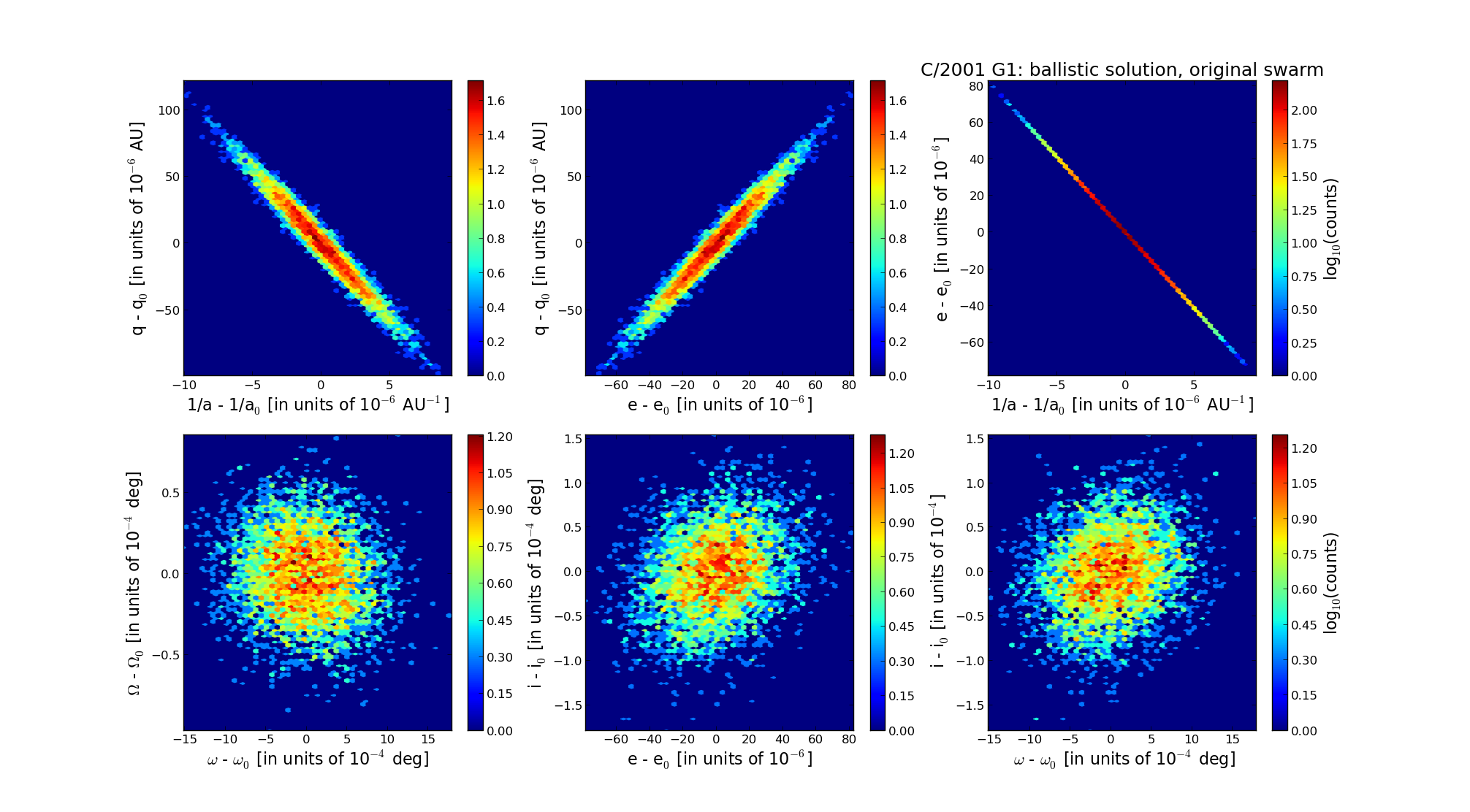| Solar System Dynamics & Planetology Group |
 |
C/2001 G1 LONEOS |  |
| Solar System Dynamics & Planetology Group |
 |
C/2001 G1 LONEOS |  |
| number of observations | 138 |
| number of residuals | 266 |
| data interval | 2000 Dec. 28 — 2003 June 1 |
| rms [arcsec] | 0.58 |
| orbit quality class | 1a |
| Epoch (TT) | 20011018.0 | = JD 2452200.5 |
| time of perihelion passage (TT) | 20011009.141613 | ± 0.008279 |
| perihelion distance | 8.23542303 | ± 0.00003133 |
| eccentricity | 1.00244802 | ± 0.00002288 |
| argument of perihelion [deg] | 343.278402 | ± 0.000468 |
| longitude of the ascending node [deg] | 203.889833 | ± 0.000024 |
| inclination [deg] | 45.368344 | ± 0.000044 |
| inverse semimajor axis [10-6 au-1] | -297.26 | ± 2.77 |

| Epoch (TT) | 16900829 | |
| time of perihelion passage (TT) | 20011010.850895 | ± 0.008190 |
| perihelion distance | 8.23895535 | ± 0.00003115 |
| eccentricity | 0.99966545 | ± 0.00002270 |
| argument of perihelion [deg] | 343.332494 | ± 0.000464 |
| longitude of the ascending node [deg] | 203.944602 | ± 0.000024 |
| inclination [deg] | 45.357940 | ± 0.000043 |
| inverse semimajor axis [10-6 au-1] | 40.61 | ± 2.76 |
| Epoch (TT) | 23110308 | |
| time of perihelion passage (TT) | 20011009.975832 | ± 0.008222 |
| perihelion distance | 8.23579001 | ± 0.00003120 |
| eccentricity | 1.00086239 | ± 0.00002267 |
| argument of perihelion [deg] | 343.306947 | ± 0.000465 |
| longitude of the ascending node [deg] | 203.917759 | ± 0.000024 |
| inclination [deg] | 45.353710 | ± 0.000043 |
| inverse semimajor axis [10-6 au-1] | -104.71 | ± 2.75 |